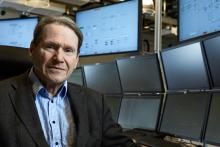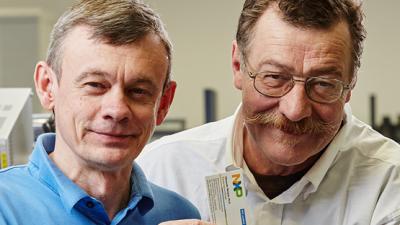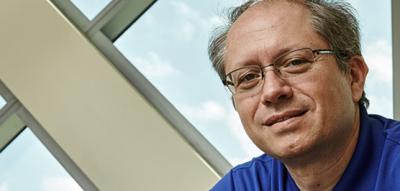Gunnar Asplund
High-voltage power grid connection
Finalist for the European Inventor Award 2015
For more than a century, alternating current (AC) has been the de facto power standard for high voltage electricity transmission. It owes its popularity to the fact that it can be easily converted to different voltages for both residential and industrial power consumers. However, AC isn’t entirely ideal. The currency suffers from higher power losses over longer distances and higher costs. The tangible result is that more power lines are needed to carry less electricity.
Through his decades of work in High Voltage Direct Current (HVDC) transmission, Swedish electrical engineer Gunnar Asplund has helped rid landscapes of the power-line eyesore by replacing overhead lines with underground cables and put direct current power on a more equal footing.
Asplund developed a voltage source converter (VSC) that simplifies the integration of AC and DC power infrastructure. This has made transmission of high voltage direct current more efficient and enabled a wider range of power ̶ from a mere trickle all the way to several gigawatts ̶ to be transferred over the same cable infrastructure.
Societal benefit
Branded as HVDC Light, the flexibility of this transmission system makes it the go-to choice for remote and offshore renewable power plants, especially solar and wind parks that generate variable power levels throughout the day.
Through this and more than 50 other patents relating to HVDC, Asplund has played a significant role in making HVDC technology the new standard for transmitting power reliably, below ground, and over long distances.
Asplund helped make it possible to connect remote wind farms, solar parks and hydropower dams to the power grid. His work is also behind power transmission systems that light up the world’s island communities without unsightly cables.
Economic benefit
Since its launch in the late 1990s, Asplund’s patented HVDC Light technology has generated revenues in excess of € 2.6 billion (25 billion SEK).
The Swedish inventor’s achievements have also helped engineering conglomerate ABB establish leading position in an industry that is currently worth about € 10.58 billion (ca. US $12.7 billion), and which is expected to grow at a compound annual growth rate of 5.1% to 2018, according to Research and Markets.
But for the rest of us, Gunnar Asplund’s most lasting legacy will likely be the benefits to security, the environment and human wellbeing that result from transmitting power out of sight and over long distances through underground and undersea cables.
How it works
Gunnar Asplund’s plant for transmitting electric power connects a direct voltage network for High Voltage Direct Current (HVDC) transmission, and at least one alternating voltage network. The system uses at least one voltage source converter (VSC) to convert current between AC and DC in either direction.
The system also contains at least one parallel connection between a semiconductor and a power surge diverter, giving the ability to switch current off in the event of a surge, before it damages the converter.
The inventor
Over his nearly 40-year career in the field, Asplund has helped HVDC technology become the new standard for transmitting power reliably, below ground, and over long distances. Asplund’s work has earned him several awards, including an honorary doctorate from Sweden’s Royal Institute of Technology and the IEEE Power Engineering Society’s prestigious Uno Lamm HVDC Award for advancements in HVDC technology.
From 1993 until 2009 Asplund was Research and Development Manager HVDC at ABB. In 2009, he founded Elways AB, which develops electric automobile infrastructure systems. Asplund holds 52 individual patents, and he is involved in a total of 187 patents.
Did you know?
Controversy over whether electrical power grids should use alternating or direct current goes back to the late 19th century and a standoff between American engineer Thomas Edison, a proponent of the direct current method of transmission, and Serbo-Croatian engineer Nikola Tesla, who championed his alternating current method. AC won out largely because it is much easier to convert the power to different voltages via a transformer.
Media gallery
Patent numbers:
Contact
European Inventor Award and Young Inventors Prize queries:
european-inventor@epo.org Subscribe to the European Inventor Award newsletterMedia-related queries:
Contact our Press team#InventorAward #YoungInventors






